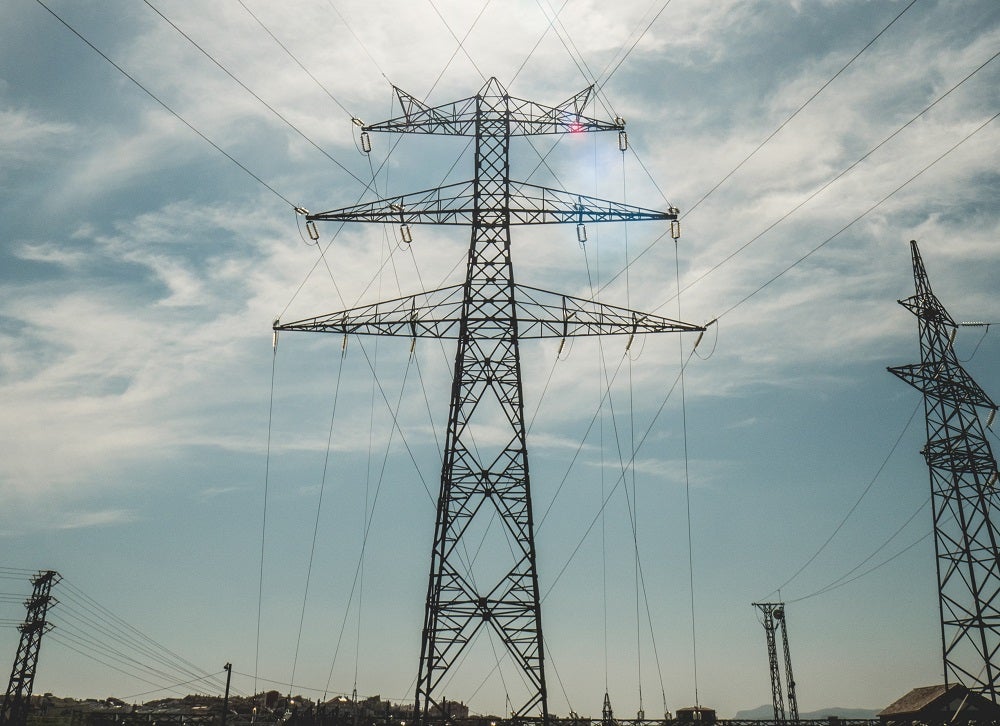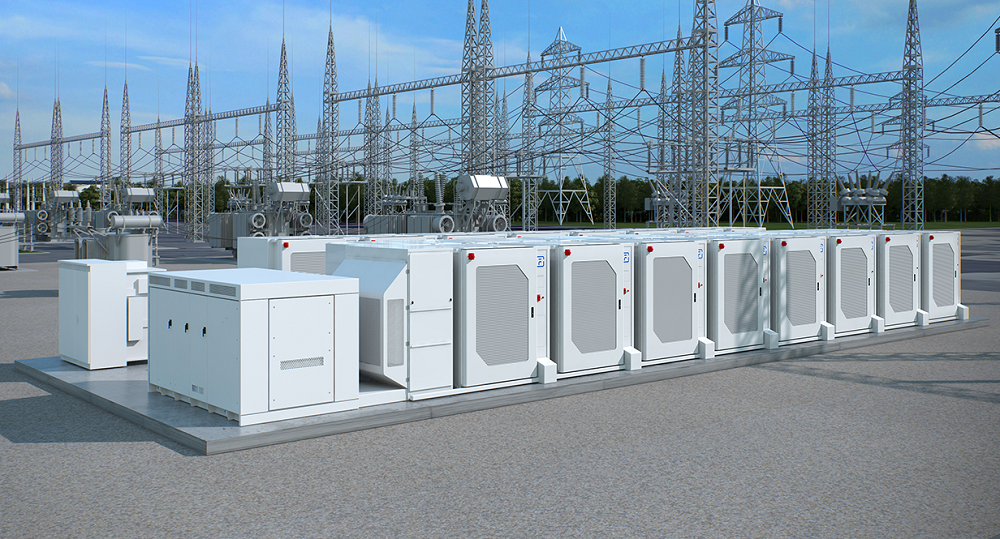
The idea of employing energy storage as transmission – aka “virtual transmission” – has been gaining traction recently – with Fluence, the AES/Siemens energy storage joint venture, perhaps not surprisingly proving to be a leading advocate
A recent Fluence white paper (Redrawing the network map: energy storage as virtual transmission) provides a useful overview of the current state of play and future prospects.
It suggests how energy storage can be used to defer or replace transmission system upgrades, and offer a new approach to solving line congestion, allowing hundreds of megawatts (MW) of capacity to be added to lines in far less time than traditional assets.
Deploying storage as transmission — “a relatively simple, but not widely-known concept” – offers networks new flexibility to meet capacity needs, the white paper argues.
The basic idea is that energy storage is placed along a transmission line and operated to inject or absorb power, mimicking transmission line flows. “Used in this manner, storage can take the place of proposed system upgrades or lines that would otherwise have to be built.”
Such applications represent a new and vital area in which storage is providing value, offering planners more options and more flexible tools for redrawing the network map around the world, the white paper says.
According to Fluence, with names like “virtual transmission” in Australia and “GridBooster” in Germany, projects of this type totalling more than three gigawatts (GW) of capacity are poised to increase system efficiency and reliability worldwide. And they can do so on far shorter timelines and with competitive costs and benefits compared to traditional infrastructure, Fluence believes.
What are the potential benefits of virtual transmission?
Storage as transmission offers numerous benefits over traditional transmission infrastructure, which the white paper summarises as follows:
Faster to deploy
Energy storage systems can be deployed as much as 80% faster than transmission lines—in as little as one to two years for assets 100MW or larger.
Storage systems are not subject to the same arduous permitting and easement processes required for transmission lines. Speed of deployment is particularly useful when local grid conditions are acute, and a solution is needed within one to two years.
As storage is increasingly used for residential and commercial applications, ancillary services, and peaking capacity, even larger system sizes for storage in transmission and distribution (T&D) applications will become standard.
Up to 80% smaller footprint
Because battery-based energy storage projects have compact footprints—housed in either data centre-like buildings or containerised — they do not have the typical environmental impacts of transmission projects.
Avoided impacts include right-of-way and easement issues, visual impacts across large tracts of land, wildlife preservation issues, or the need to cross water or protected lands, as well as the communal benefit of fewer high-voltage cables crisscrossing local communities.
A 200-300MW energy storage project could fit onto a site equivalent in size to only 600m of 220 kilovolt (kV) transmission line, including easement.
Flexibility
Storage assets can be scaled dynamically in terms of size, operations and applications over different planning horizons to flexibly adapt to network conditions.
Storage can also be configured in a wide variety of ways to adapt to siting constraints. No other transmission asset class can provide this level of flexibility.
A relocatable asset
Unlike poles-and-wires projects, storage can be sited at a variety of points on a network where grid connection is available. It can also be augmented in place or potentially moved to a new location if load or generation patterns change over a project’s lifespan.
This attribute adds key option value for network owners and operators in how they deploy capital.
Additional services
As well as enabling greater dispatchability of generation, storage can also provide reactive power, enabling network operators to better preserve system performance in the event of temporary transmission outages or, in more extreme circumstances, prevent blackout/system black conditions or rolling brownouts.
Virtual transmission projects can also provide a range of ancillary services, including frequency and voltage control and special protection schemes.
Less risk, more revenue, and maximising value
All of these attributes add up to less risk for network owners. Further, energy storage can provide either the network owner or market participant with revenue streams, while concurrently offering network support, such as ancillary services, capacity payments or arbitrage (depending on configuration and local ring-fencing regulatory restrictions).
The ability to deploy storage rapidly enables significant energy price reductions to be achieved faster than is possible with traditional transmission lines. As an example, each MW added on several key Australian interstate transmission lines enables more electricity to be imported or exported across them, helping reduce electricity prices during periods of peak renewable generation.
In Australia, deploying 100MW of storage would take 24 months less than traditional solutions, realising as much as AUD$34m of savings for consumers during that period for specific interstate lines.
Storage also offers flexibility of ownership compared to single-use assets, enabling potential owners to access additional services, such as managing renewable resource integration.
Reduce inefficient dispatch of generation
In a number of markets, congestion on transmission corridors is forcing operators to “redispatch” generation—that is, pay generators to ramp down on one side of congestion and others to ramp up closer to load.
Storage deployed along a congested corridor can mimic line flows and reduce the need to redispatch generation, minimising excessive ramping.
For example, in Germany transmission-connected storage is being discussed to reduce the costs of redispatching generation to meet peak needs along congested transmission corridors. According to the German Network Development Plan 2030 (2019 Update) and Federal Network Agency Plan 4, installing 1,300MW of storage capacity on the German transmission grid would lower redispatch costs by €130m per year.
Existing energy storage projects have paved the way for virtual transmission
In summary, Fluence concludes that although energy storage will not always supplant traditional poles-and-wires projects, it offers networks and network planners a powerful and flexible new tool for addressing network issues.
The company points to energy storage projects deployed over the past few years that have helped pave the way for its use as a transmission asset. For example:
- Arizona Public Service procured three 2MW projects for transmission and distribution applications—two to provide reliability on distribution feeders serving neighbourhoods with high photovoltaic solar penetration, and one enabling the utility to defer upgrading 20 miles of T&D lines.
- Australia’s AusNet Services procured a 30MW, 30 megawatt-hour (MWh) Fluence system for its Ballarat Terminal Station in Victoria. The system is providing grid stability services at a critical transmission junction, as well as flexible capacity to meet the region’s daily peak demand needs.

The white paper says that the maturity of energy storage technology is leading a number of countries to explore ambitious “storage-as-transmission” projects, notably Australia, India, the US, Germany and France.
Several virtual transmission ventures are in the global pipeline
Looking to projects currently under construction or consideration, the Fluence white paper mentions the following:
Germany
A number of north-south HVDC corridors are planned/under construction in Germany. The proposed German 1,300MW GridBooster energy storage project would provide backup transmission capacity as opposed to the grid operators maintaining an entire additional transmission line on standby under N-1 criteria.
The GridBooster projects would take the virtual transmission concept to gigawatt scale, and would enable more efficient operation of existing key transmission lines delivering power through the centre of Germany.
United States
California’s Pacific Gas and Electric selected a 10MW energy storage project as part of a portfolio of transmission solutions during its regional transmission planning process, the first such project chosen to provide congestion relief in US markets.
In addition, in 2019 the PJM Interconnection market in the US held a procurement for transmission solutions to help relieve network congestion, and received proposals for multiple 25-50MW battery-based storage projects.
The proposed projects included options for both standalone storage as well as storage paired with other system augmentation (ie, line or substation upgrades) in a hybrid approach.
The Midcontinent Independent System Operator (MISO) has proposed its first-ever rules on storage as a transmission asset to the Federal Energy Regulatory Commission, as well as its first-ever storage-as-transmission project.
Developed by American Transmission Company (ATC), the 2.5MW/5 MWh project was proposed to take the place of rebuilding a 115kV double circuit, and would be deployed post-contingency to prevent voltage collapse if the multi-segment transmission supply line were to experience outages.
The cost of the energy storage solution was about 30% cheaper than the cost of the traditional line rebuild option, representing significant savings to customers.
France
French transmission system operator RTE is planning its first 40 MW “virtual transmission” project, with the goal of increasing grid integration of renewable energy and optimising power flows on its network.
In this instance, RTE is proposing to deploy a pair of storage systems that will operate in tandem at each end of a line.
Chile
Independent power producer AES Gener has submitted a proposal for two 200MW energy storage projects to Chilean regulator Comisión Nacional de Energía (CNE) for inclusion in Chile’s National Expansion Transmission Plan.
If approved, the two virtual transmission projects would provide N-1 capacity to relieve congestion on the system, in particular at one location where 700MW of renewable generation is set to come online on the constrained side of the transmission corridor.
The proposal is supported by a report indicating net present value savings of $66m on system-wide generation costs, using the same modelling run by CNE to evaluate new transmission lines.
The savings would be generated by more efficient dispatch of the system due to the increased flexibility energy storage can bring to the transmission grid.
Meanwhile, a recent blog from Fluence about prospects for virtual transmission in Chile talks about adding “a total of 500MW of energy storage at the Punta Sierra–Nogales and Temuco-Cautin segments” which would “generate a net present value in economies to the SEN [National Electricity System] of $400m on average (and possibly as much as $600m) by lowering generation dispatch costs”, with the increased capacity on those corridors allowing transmission of more low-cost energy to load centres.
This article originally appeared in Modern Power Systems magazine






